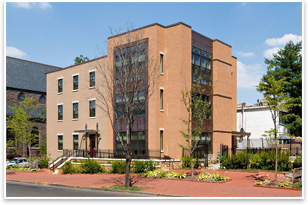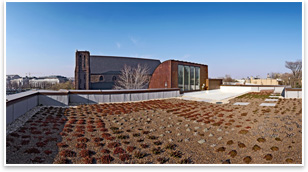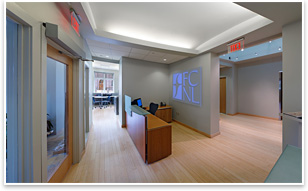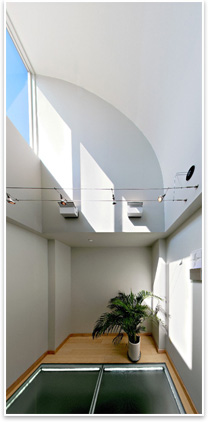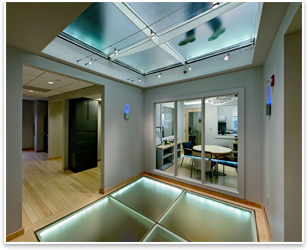
| First Green Building on Capitol Hill a Metaphor for Environmental Values
Summary: The Friends Committee on National Legislation (FCNL), the largest peace lobby in Washington, D.C., aims to meet LEED certification with the successful two-year green renovation of its Civil War-era Capitol Hill headquarters. Washington D.C.-based Burt Hill Kosar Rittlemann Associates’ green design for the red brick, reconstructed building includes a green roof, light scoop, geothermal heating/cooling system, bamboo flooring, energy-efficient windows, and an access ramp. Renovation was completed in 2005 at $6.17 million.
The renovation also included ADA-compliant access ramps to the front and side doors, an elevator to all floors with voice-annunciation system, and widened hallways. “Our vision for this building was one that would have a lot of light, be ADA compliant, and would walk softly on the earth by being a really green building on Capitol Hill,” says Joe Volk, FCNL executive secretary.
To complete the green picture, the FCNL roof is also equipped for future installation of a PV array, the electricity contract purchases renewable-energy-source credits, and the low-energy electric traction elevator has no hydraulic fluid. Low-flow toilets and water fixtures and environmentally friendly cleaning material round out the sustainable elements. “The general committee, with a risk of faith, exercised the courage to take on the opportunity to create a new building on Capitol Hill for the next 60 years of our work,” says Volk. “This building is a metaphor for our work. FCNL has to rebuild another house—a house of democracy, which is threatened and falling down. We need architects to build that house of democracy back so that it is safe, secure, and strong, but also so that it reflects all the values of America in the way we tried to do this building.” |
||
Copyright 2007 The American Institute of Architects. All rights reserved. Home Page |
||
news headlines
practice
business
design
recent related
› Gensler Achieves First LEED-Silver Auto Dealership
› OHSU Center First Medical Facility to Win LEED Platinum Award

